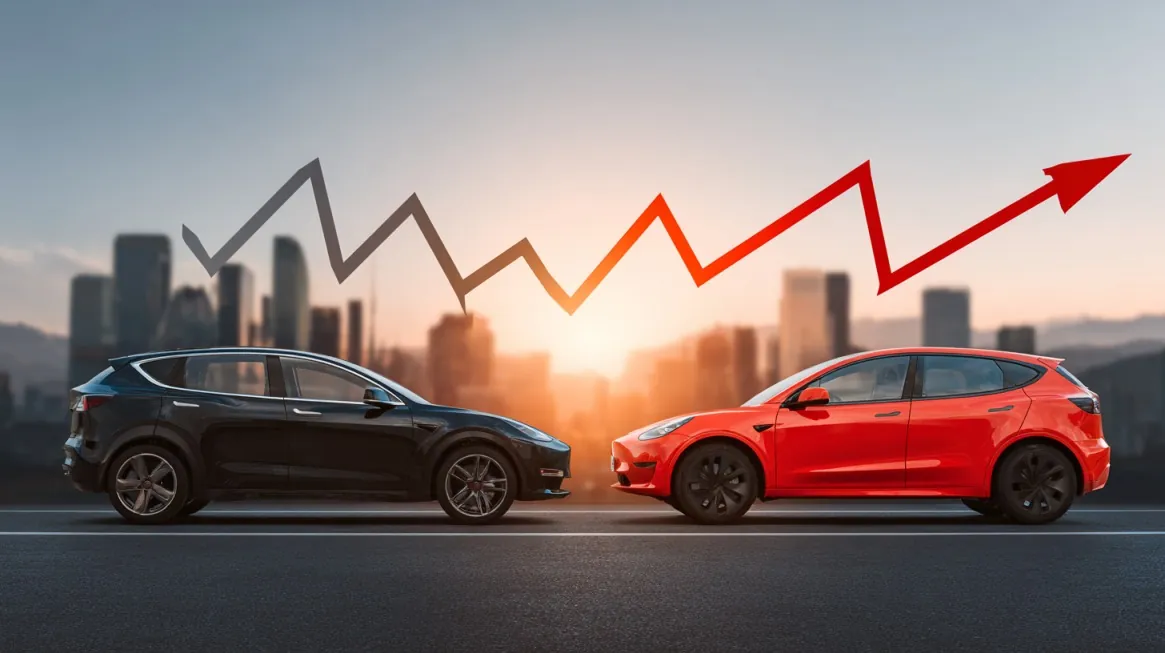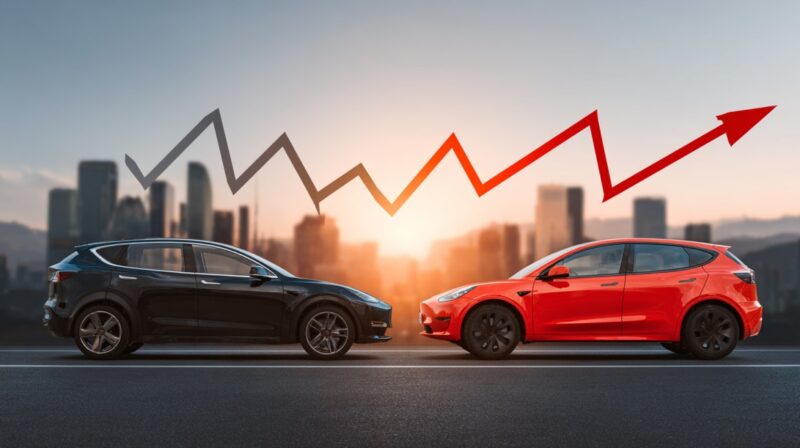
Share Post:
So here we are—2025. And if you’ve glanced at car prices lately, you’re probably feeling a little… stunned. Or frustrated. Maybe even slightly betrayed by your bank account. It’s not your imagination.
New and used car prices are still running high, and while there are some glimmers of hope out there (incentives, better financing, more affordable models on the lot), it’s a tricky market to pin down.
But that’s what we’re here for—breaking down what’s happening, what might be coming, and where buyers, sellers, and just-curious observers fit into the picture.
Table of Contents
ToggleKey Highlights
- Car prices remain high in 2025, with new cars averaging ~$48,641 and used around ~$25,128.
- Tariffs and supply chain issues are keeping prices elevated, despite some signs of inventory growth.
- EV prices are dropping faster than gas cars, especially in the used market, thanks to incentives.
- Best deals may come during holiday sales or on leftover model-year vehicles.
Why Prices Have Gone Sky-High
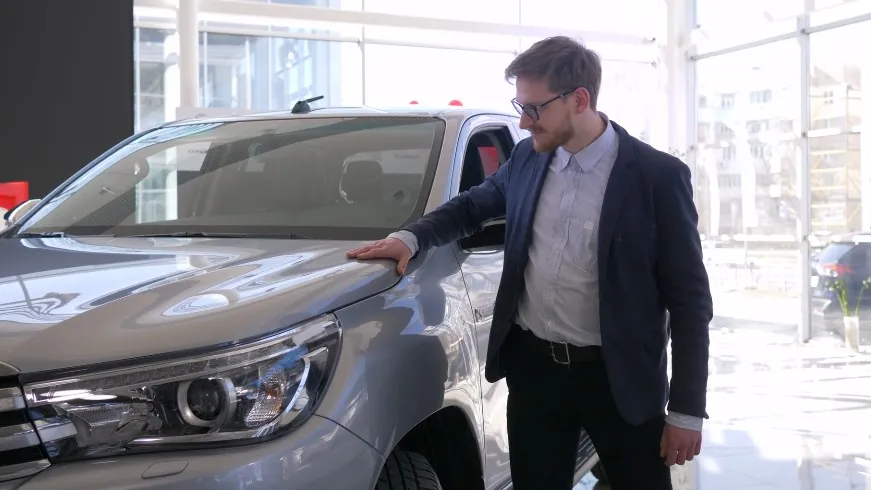
According to Carscoops, new rides are running roughly $48,641 on average as of March 2025. That number sits near record territory, even though it’s down a tad from a previous high of almost $49,929 around December 2022, as of Cox Automotive.
People who remember the days of sub-$40,000 averages (back in January 2020) keep shaking their heads, wondering if prices will ever go back to those levels. Used vehicles currently go for about $25,128 on average, which isn’t exactly cheap.
However, the averages vary, depending on the source. For example, according to the Wall Street Journal, in early 2025, the average price of a three-year-old used car sold wholesale was nearly $28,000, representing a 45% increase from early 2020.
Market watchers think a slight nudge upward could happen later in the year, fueled by limited supply and the usual seasonal rush. Certain folks keep hoping for a huge price drop, but insiders say that might not be in the cards right away.
Why Are New Car Prices Holding Strong?
A bunch of factors keeps new car prices pinned near the top. Some people blame supply chain issues (which aren’t fully fixed) for creating fewer choices on dealer lots.
Others point at inflation, rising materials costs, or shipping expenses. It’s not one single reason; it’s more like a cluster of challenges pushing average transaction prices higher than many consumers prefer.
One interesting twist is that many manufacturers are offering deeper incentives to lure buyers. CarEdge forecasts a possible 3–5% price drop by late 2025, driven by discount deals, zero-percent financing, and special lease packages.
Despite that, it’s not guaranteed that official sticker prices will fall. Negotiating skills or timing your purchase might be more important than ever. People who hang on until the holiday season or year-end sales could snag a decent bargain, but it’s still a toss-up if costs will plummet dramatically.
Used Market
Those interested in pre-owned options may feel similarly frustrated. The average used price hovers around $25,128, which is no small chunk of change. There’s chatter about minor increases ahead, mostly due to:
- Tight inventory (fewer off-lease units returning, plus reduced trade-ins)
- Increased spring and summer demand (folks often buy more when the weather warms up)
- Lingering supply chain impact (the chip shortage from the past few years affected new car production, creating fewer used options in the pipeline)
Investopedia reports that finance rates for used rides can also hover around the double-digit mark (somewhere near 14% on average), which is tough to swallow.
That means monthly payments can get pretty hefty for anyone not plunking down a large down payment.
Some buyers look to older vehicles (maybe six to ten years old) to save a few bucks, and certain models in that range have even gone up in value, defying the usual pattern of depreciation.
Potential Table of Market Changes (A Glance at New Car Averages)
Below is a short look at how the average transaction price shifted from early 2024 up to now (based on the input from Cox Automotive):
| Month/Year | Avg. New Car Price |
| 1/2024 | $47,401 |
| 2/2024 | $47,244 |
| 3/2024 | $47,218 |
| 4/2024 | $48,368 |
| 5/2024 | $48,389 |
| 6/2024 | $48,424 |
| 7/2024 | $48,166 |
| 8/2024 | $47,870 |
| 9/2024 | $48,397 |
| 10/2024 | $48,623 |
| 11/2024 | $48,724 |
| 12/2024 | $49,740 |
| 1/2025 | $48,641 |
That big jump in December 2024 might be explained by year-end sales patterns or limited inventory on popular models.
Some dealers also pull back on incentive spending once they see strong demand, so it’s not surprising that certain months surge more than others.
Key Factors Influencing Prices
3. The tariffs will make imported cars ~$12,500 more expensive.
🚗 The average US new car price is already $49,000.
💰 Higher costs = lower sales.
⚠️ Working-class Americans may delay car purchases, slowing economic growth.— Anmol Sharma (@financebyanmol) March 27, 2025
A few major trends need to be mentioned:
1. Tariffs
Rumors of new or increased tariffs on imports have the potential to reshape the market overnight. If models built by Ford, GM, or Volkswagen get slapped with a big tariff, that cost hike could get passed on to customers.
Reuters reported that on March 26, 2025, President Donald Trump announced a 25% tariff on all imported vehicles and foreign-made auto parts, effective April 3 for cars and May 3 for parts.
This policy affects major automakers, including Ford, General Motors (GM), and Volkswagen. As a result, these companies face increased costs, which they may pass on to consumers through higher vehicle prices.
Analysts warn that such tariffs could add thousands of dollars to the cost of an average U.S. vehicle, impacting both consumers and the auto industry’s global operations.
2. Interest Rates
The Federal Reserve made several cuts in late 2024, with more likely on the horizon for 2025, as we can conclude from Fox Business reports.
That can lower monthly payments a bit, giving some buyers a chance to finance a pricier car than they originally planned. However, there’s always the threat of inflation rearing its head again, which can complicate the situation.
3. Shift to Electric
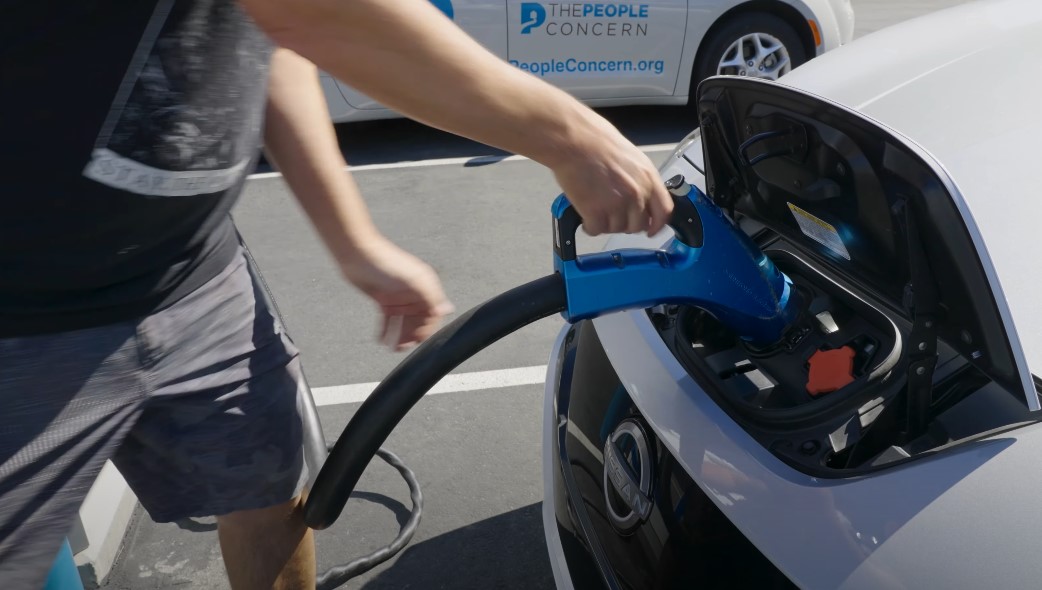
Electric vehicles remain more expensive than your average gas-powered ride, sometimes by as much as $13,000 above the overall new-car average. However, federal and state incentives help soften the blow.
For example, in 2018, the difference was 53%, which narrowed to 15% by 2024, as InsideEVs reports. Some used EVs are going for much less than they did a year or two ago, enticing those who want to try out plug-in tech without paying an arm and a leg.
4. Supply Chain Glitches
The legendary chip shortage is slowly healing, but it hasn’t fully resolved. Certain parts of the country still suffer from a tight selection, and that means dealers in those areas feel no need to slash prices.
We found out from Cox Automotive and Investopedia that as of early 2025, the U.S. new-vehicle inventory reached approximately 2.92 million units, marking a 14.2% increase compared to the previous year.
This rise in inventory has contributed to a stabilization of new car prices, with the average listing price at the end of January 2025 being $48,637, down 2.5% from the prior month.
Notably, there has been a significant increase in the availability of vehicles priced under $30,000.
For instance, the number of new vehicles available for less than $30,000 grew by 42% in November 2024 compared to the same period a year earlier.
5. Seasonal Bumps
Spring and summer often spark more buying. Some families shop for a new ride before road-trip season or back-to-school in the fall. That seasonal pattern can keep used prices from dropping too far.
Electric Vehicles – High Prices but Rising Incentives
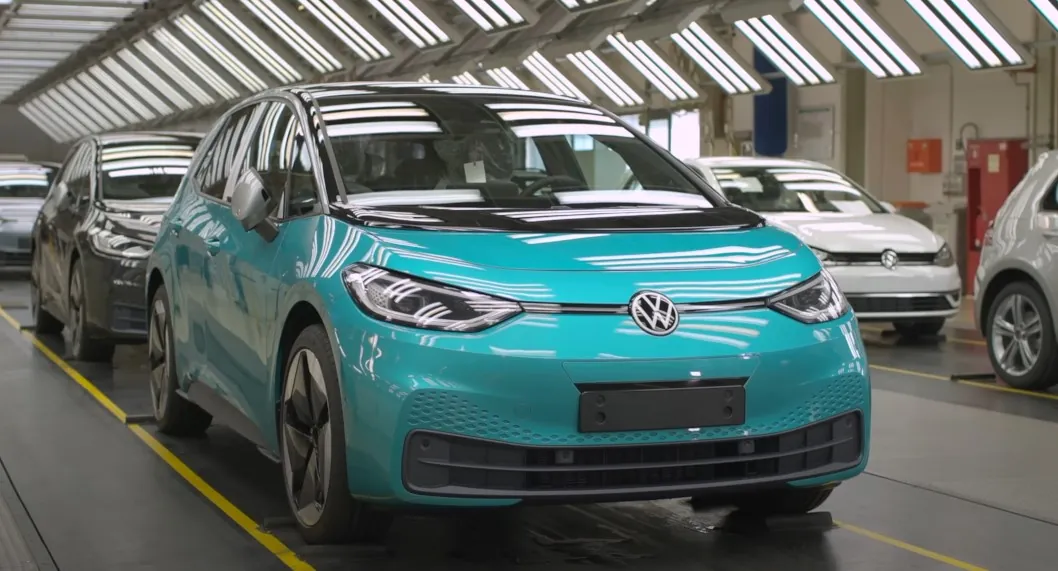
EV enthusiasts point out that battery-powered cars and crossovers see average prices around $49,000–$53,000 at the moment, but incentives can trim that figure.
More important is the fact that used EVs appear to be dropping in price at a faster pace compared to regular used cars. Also, there are many new affordable EVs available to purchase nowadays.
Some people see that as an opportunity to snag an eco-friendly vehicle with decent range. Government policies also encourage more manufacturers to produce budget-friendly electric options, which might expand that under-$30,000 inventory in the near future. Key EV Market Notes:
- Growth in charging infrastructure leads some shoppers to warm up to the idea of owning one.
- Battery tech improvements might lower costs over time, but it’s not an overnight shift.
- Luxury EV brands (like Tesla, Audi, or Porsche) often run promotions or price adjustments that ripple across the market.
Tips for Shoppers Looking to Save
A few moves can help folks avoid overpaying:
- Shop for leftover model-year vehicles: As new inventory rolls in, dealers cut prices on last year’s models.
- Keep an eye out for special financing deals: Zero-percent offers or big cash-back incentives can sweeten the pot.
- Consider certified pre-owned (CPO): Those might be slightly pricier than typical used choices, but a warranty and peace of mind may offset the additional cost.
- Watch for new tariffs: If new tariffs get enforced in the middle of your shopping timeframe, prices could jump overnight. Or, if tariff threats fade, that might lead to fewer concerns about sudden spikes.
Sneak Peek at the Affordable Segment

There’s a bit of good news for those who want to stick to a lower price bracket. According to Forbes, the inventory of new models under $30,000 jumped by 42% late last year, and that trend might continue.
It’s not easy to find vehicles under $30k that check all the boxes (safety, good fuel economy, acceptable features), but it’s better than it was a couple of years ago.
Leasing has also reemerged as a decent option for some buyers, especially with special programs or brand-specific offers.
Monthly lease payments can sit below $200 for certain compact cars, making them an attractive alternative to used models that are priced uncomfortably high.
Always double-check mileage limits and end-of-lease fees, though, since those can add up.
Luxury versus Economy
- Luxury Rides: Brands like BMW, Lexus, and Cadillac are still up there in terms of transaction price, but watchers have noticed a few cost reductions in the premium segment. Competition from Tesla’s more budget-friendly approach to EV luxury could shake things up. Some Tesla models have seen price drops, which then puts pressure on rivals to keep pace.
- Economy Cars: The marketplace for compact sedans and affordable crossovers is busier than it’s been in quite a while, with new entries showing up from various manufacturers. Many consumers who just need reliable daily transportation see a glimmer of hope in the sub-$30k bracket, even if it’s still tricky to locate the perfect model.
Final Take
Shopping for a ride in 2025 might feel intimidating, but it isn’t impossible to snag a fair deal. A little patience, some homework on incentives, and the willingness to pivot between new and used options can pay off.
Watch for promotions near holiday weekends, or wait until the year-end push if you can. Price drops won’t be enormous, yet every little bit helps—especially when average figures hover at record highs.
Keep in mind that conditions can shift fast, especially if tariffs become a serious factor or if global events disrupt production again. Smart planning, checking multiple dealers, and being open to different trims or slightly older used models could help you save a chunk of change.
Good luck with the hunt, and here’s hoping you land a sweet set of wheels without breaking the bank!
References
- carscoops.com – New Car Prices Fell 2.2% In January
- coxautonic.com – Data Tables for December 2022 Kelley Blue Book Average Transaction Prices Report
- coxautonic.com – Kelley Blue Book Report: Average New-Vehicle Prices Fell in January, But Were Higher Year Over Year By 1.3%
- wsj.com – Why There Is No Relief Ahead for High Used-Car Prices
- caredge.com – Predictions For 2025: Automakers Buckle Under Pressure From Consumers
- investopedia.com – What’s the Outlook for Interest Rates in 2025?
- reuters.com – Global auto industry stocks slump as 25% tariff on US imports looms
- foxbusiness.com – How the Fed’s rate cut will impact auto loans
- insideevs.com – The Price Gap Between EVs And ICE Cars Is Shrinking Fast
- forbes.com – High Prices Drive Car Shoppers to Think Smaller
Related Posts:
- What’s Affecting Car Prices in 2024 and Why 2025 May…
- When Will Entry-Level Electric Trucks Hit the Market?
- How Much Does a Police Car Cost - A Breakdown of…
- Buying a Car with a Rebuilt Title in 2025 - Pros,…
- Car Registration Fees in 2025 - What You’re Paying…
- 2025 Dodge Charger - Full Review, Pricing Details,…




